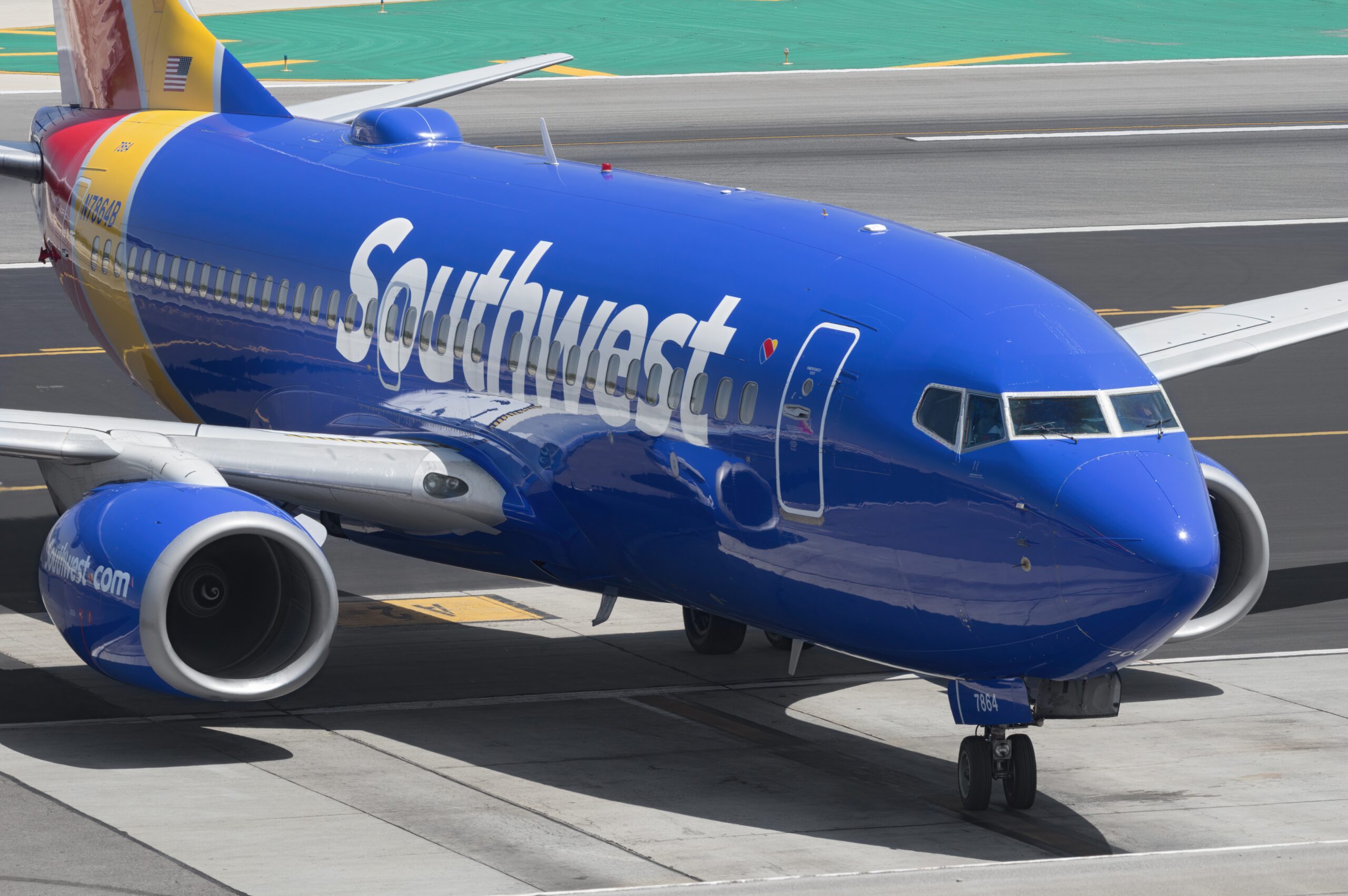A Southwest Airlines passenger who was undergoing intense chemotherapy at the time that he tried to fly with Dallas based carrier says he was physically attacked and had his cell phone robbed from him by an airport gate agent who refused to honor Southwest’s ‘extra seat’ policy.
The now infamous and controversial ‘extra seat’ policy allows Southwest passengers to book two seats for one person if they are obese or might otherwise encroach into the space of the neighboring seat.
Passengers who feel they might need an extra seat simply need to phone Southwest’s reservation call center to make the purchase, which then allows Southwest to adjust its available seat count based on the needs of passengers.
If, however, the plane takes off with spare seats, then customers who have bought an extra seat should be allowed to claim a refund.
David Ford from Avon, Connecticut, says in a recently filed lawsuit against Southwest Airlines that rather than honoring its extra seat policy, he was left demeaned and humiliated by gate agents who told him that he didn’t look disabled before physically assaulting him and snatching his cellphone.
Weighing 230 pounds and with a height of 6’1″, David is on the larger size but wouldn’t be considered the stereotypical user of Southwest’s extra seat policy. He is, however, a cancer survivor, and at the time he tried to fly with Southwest in June 2024, he was undergoing chemotherapy and radiation treatment.
As a result, David says he moved about a lot and would encroach on the neighboring seat.
David phone Southwest’s call center and explained his circumstances and, according to a lengthy legal complaint, the reservation agent was more than happy to book him an additional seat through the ‘extra seat’ policy.
On the outbound flight from Las Vegas to Spokane, David says there weren’t any issues, but on his return, he ran into multiple problems with the gate agents who demanded to know what disability he suffered from and told him that he didn’t look like he needed an additional seat.
David was left embarrassed, although the treatment that he received in Spokane was only the tip of the iceberg, according to his attorney.
On June 12, David had a flight booked with Southwest from Bradley International Airport and he had again called Southwest’s reservation center ahead of his flight to book an extra seat.
Again, the gate agents demanded to know what disability he suffered from and told him “You don’t look handicapped,” before refusing to issue a boarding pass for David’s additional seat.
As David demanded a supervisor to complain, a second agent then allegedly climbed on the check-in weighing scales in order to stand over him and told him: “You ain’t getting a second seat on my watch.”
By this point, David says he was feeling intimidated, so he started recording the encounter on his cell phone, only for the agent to rip it out of his hand and refuse to return it.
Not long after, local police arrived to find out what was going on, and only at this point did the agent return David’s phone. Eventually, a supervisor intervened and agreed to print both boarding passes so that David could travel with an extra seat beside him.
Shaken and upset, David thought the matter might be over, but the lawsuit alleges that the agent who snatched the phone from him then boarded the plane once everyone was sat down and took the seat beside David to demand he delete the video recording.
David has already complained to Southwest about his treatment at the hands of its agents, and the airline allegedly wrote back to him, admitting that it had “failed to comply with regulations in your case”.
The lawsuit seeks to sue Southwest on a number of grounds, including unfair trading practices over the way it markets its extra seat policy, and infliction of emotional distress. David is suing Southwest for an unknown amount in compensatory and punitive damages.










































